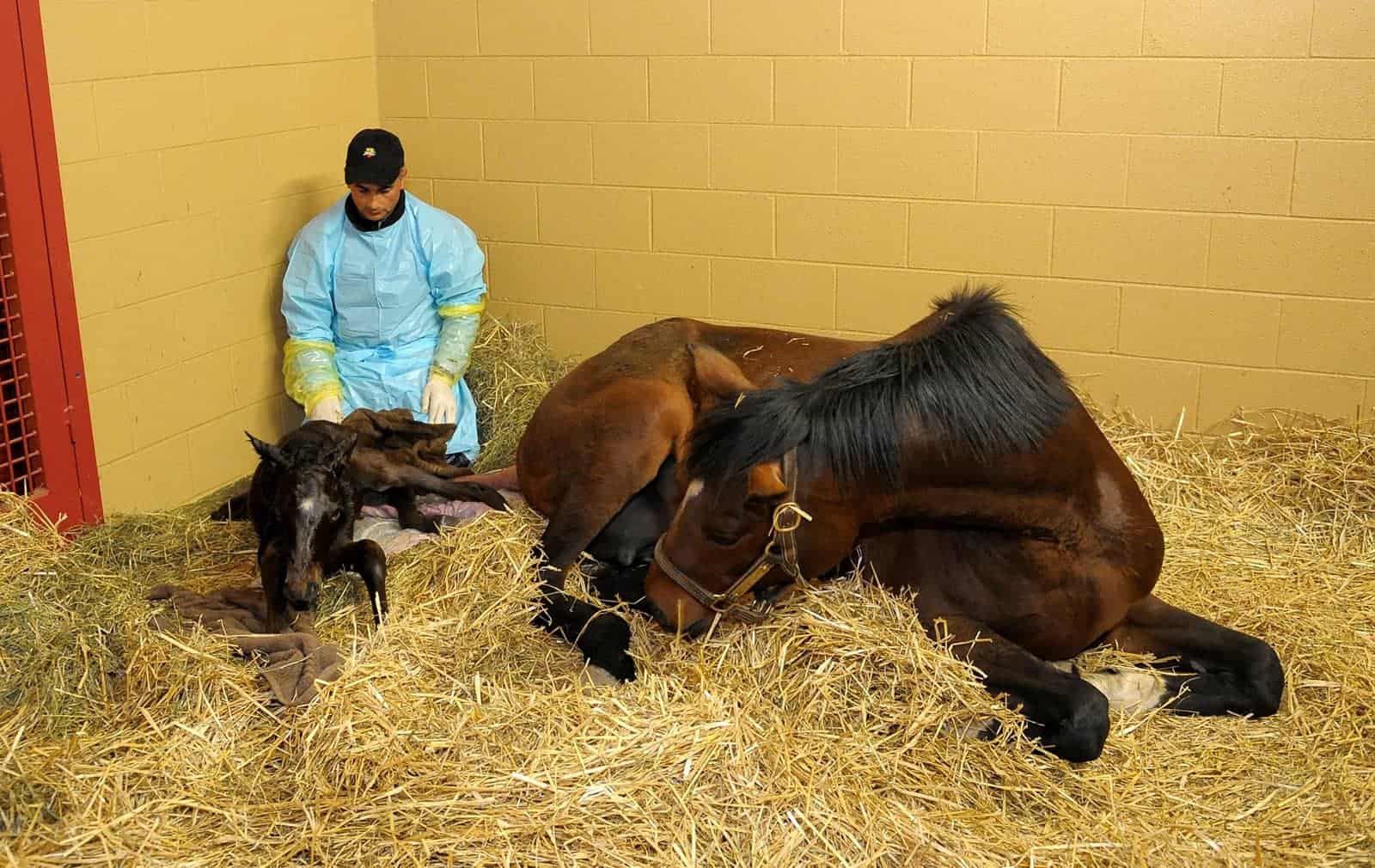Predicting Foaling: Calving Alert System Might Work for Horses, Too

It’s never easy to know when a mare’s going to foal. Sure, you can detect the approximate month based on a gestational calendar. And you know you’re getting close when you see the udder start to fill. But guessing the precise moment labor will start is nearly impossible—and, unfortunately, most labor detection methods just aren’t very reliable, a research team based in Germany said.
But human presence is critical when a mare foals in case intervention is necessary during a difficult birth, the researchers said. That’s why they recently investigated a new foaling detection system based on an accelerometer. The idea isn’t to check heart rate or up-and-down movements but, rather, “subtle restlessness,” explained Christine Aurich, DVM, PhD, head of the Graf Lehndorff Institute, in Neustadt.
“The restlessness we detected is hardly detectable by the eye of the observer,” Aurich said. “So it is not lying down and standing up. In fact, the mares are often standing quite still, but they show small movements like weight-shifting or minor bobbing of the head. These movements are probably caused by some distress related to stage one of parturition (when the fetus turns)
Create a free account with TheHorse.com to view this content.
TheHorse.com is home to thousands of free articles about horse health care. In order to access some of our exclusive free content, you must be signed into TheHorse.com.
Start your free account today!
Already have an account?
and continue reading.

Written by:
Christa Lesté-Lasserre, MA
Related Articles
Stay on top of the most recent Horse Health news with















